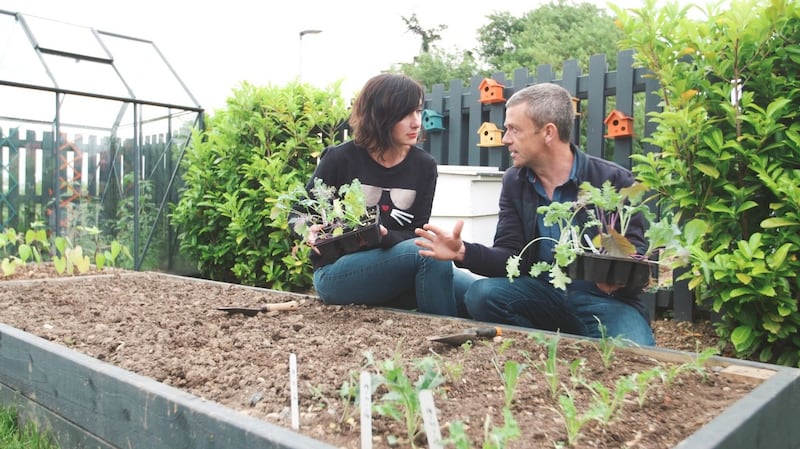1. Get started
The first and best piece of advice is this: just start. Don’t wait until next month or next year. You don’t need green fingers (they are a myth) or a degree in Latin. Don’t be afraid. Get yourself some seeds and put them in some soil. The good news is that all seeds want to grow, and they already know how to do it and what they want to become. So more than likely, with just sunlight and water, they will grow. Sowing a seed is an act of profound optimism, and your attitude should be no different.
2. Get the basics

On a basic level all you need are seeds and something to grow them in. That means some good compost and something to put the compost in. For smaller-scale growing that could be seed trays, pots, containers or even an upcycled colander or an old pair of wellies. You should be able to get everything you need at your supermarket or you can order them online. At GIY we've put all these basics together in our Growbox starter kit collection.

3. Get a bed
On a slightly bigger scale, clear some space in your back garden for a timber raised bed. They are easy to build yourself with some DIY skills, or buy a flat-pack bed online and assemble the frame yourself. A raised bed is an ingenious cheat that allows you to create 30cm or more of good-quality topsoil above your existing soil. Raised beds can be any size and shape you want, but they should never be more than 1m wide, so you can reach the centre from both sides. Never stand on the soil. If you’re ambitious enough for this you might need to buy some basic tools: a trowel, spade, fork, hoe and rake.
4. Start small
A sunny indoor window sill is basically like a greenhouse, so it’s ideal for getting seeds going and growing plants, such as tomatoes, that like some heat. Most herbs will do very well indoors. Try parsley, thyme, coriander, mint, lemon balm, sage and basil. Growing in pots isn’t just for indoors, though. Any paved outdoor space or an apartment balcony can still be your own little veg patch. Just make sure you know where the sunlight is and that your plants can get as much as they need. Outdoor or balcony railings are great for supporting climbing plants like runner beans.
5. Grow easy veg
You can grow a serious array of interesting salad leaves in pots or trays pretty much all year round indoors. Focus on quick-growing leaves like cress, rocket, pak choi, mustard or mizuna. Or grow peas to eat as shoots in a salad or stir-fry. Grow dwarf varieties of veg like French beans and tomatoes. Chilli peppers are compact little plants that do very well indoors. Potatoes grow surprisingly well in containers. Fill a big black sack with soil and give it a try.
6. Grow veg you love
Don’t forget, this is about food more than gardening. It’s about nutrition, wellbeing and sustainable living. The point of all this should be to cook and eat the food you grow, so make it food you love to eat. Once you get going you’ll find that the veg you grow tastes better than anything you buy and lets you eat things that might be hard to find. Over the years at GIY we have seen how people who start growing their own food soon eat more plants, more seasonally, more locally and more happily than ever before.
7. Get help
GIY began with the mission to encourage and support people to grow their own food. We're still doing this more than a decade on and have never been more motivated than we are during the coronavirus crisis. We have seen a huge surge in people interested in growing their own food in recent days, and we are standing by to support. Chat with us on our social-media channels or visit giy.ie for videos and advice on growing any vegetable, plus quality seeds and our collection of Growbox starter packs. Don't let anything get in your way.
Michael Kelly presents Grow Cook Eat, on RTÉ One on Wednesday evenings. He is also founder of GIY, which aims to support 100 million people to grow, cook and eat some of their own food for a healthier, more sustainable world by 2030










